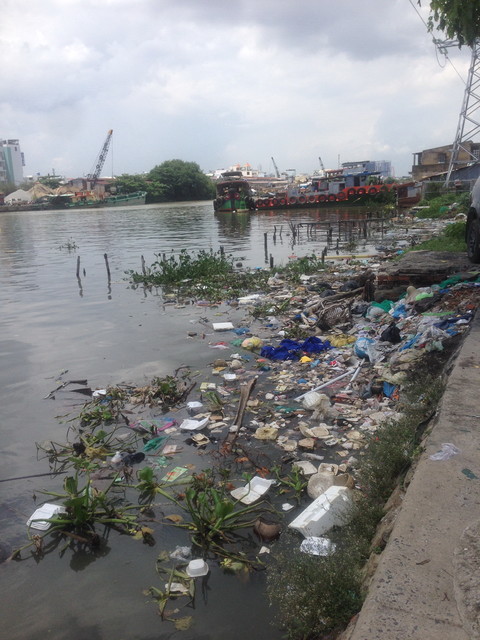 Environment
Environment

Nearly 200 cameras were installed in Trường Thọ Ward, HCM City’s Thủ Đức District as it was considered a hotspot for littering, in the last few years.

|
| Waste is seen at Tẻ Canal in HCM City's District 4. — Photo congan.com.vn |
HCM CITY — Nearly 200 cameras were installed in Trường Thọ Ward, HCM City’s Thủ Đức District as it was considered a hotspot for littering, in the last few years.
The municipal People’s Committee last month asked to strengthen the use of surveillance cameras to detect violations relating to littering in public, and ward authorities fined eight people for throwing waste into canals and public space in the first half of this month.
Thanks to the cameras, illegal littering has been reduced sharply in some areas such as the Nhà Trà Bridge and Ba Bò Canal.
Captain Nguyễn Hữu Hậu, deputy head of the ward’s police, said while using the cameras to record illegal littering, police and local residents helped identify suspected violators.
“Police show the clips to the suspects for confirmation and if they admitted their violations, the ward’s People’s Committee will issue fine decisions in accordance with regulations,” Hậu said.
Also thanks to camera recordings, police in Gò Vấp District’s Ward No17 identified motorbike drivers who left daily waste along streets in the ward.
Ward police arranged staff to patrol and catch red-handed violators and levied fines of up to VNĐ2 million.
Vice-chairman of Gò Vấp District People’s Committee Đỗ Anh Khang said that the city got the greenlight for fining people recorded to littering but Government’s decree on using sound/video recording equipment to detect violations in security, traffic and environment did not include clear punishments for violations.
“Violators could make use of the legal loophole to complain and refuse to pay fines if authorised agencies only show them images extracted from the camera recording,” Khang said, adding that with the cameras, police would learn about violators’ littering routine and then make plans to catch them red-handed.
However, for litterers who wear face masks and do not live in the district, authorities found it difficult to identify them, Khang said.
Nguyễn Văn Tiến, deputy head of Civil Law Department under HCM City Law University, said that according to the Law on Handling Administrative Violations, to deliver fines for administrative violations, authorities have to catch violators red-handed and then make a record of the violations instead of solely using camera recordings.
If litterers admitted their violations to environmental inspectors, they can be fined.
Tiến said that due to concerns about fine-delivering principles, district authorities hesitated to use camera recordings to fine litterers.
“A feature of public littering is that the act happens quickly in any time but authorities can't arrange staff to trace and catch violators red-handed all the time,” Tiến said, adding that using cameras was an effective way to detect and fine violators.
Trần Thành Bình, General Director of HCM City Urban Drainage Company said about 9,2000 tonnes of daily solid waste was discharged in the city every day, with much of it was left on the streets, in canals and drains’ mouths, resulting in environmental pollution and blocked drains causing floods during rains or high tides.
The company assigned teams to pick up trash from drains but they were unable to collect all the waste, Bình said, adding that some company’s workers had been burned because of chemicals in sewage or injured by broken glass and metal.
Bình said installing cameras to detect litterers was a short-term solution to curb illegal littering in the city. He also called for stricter measures to tackle littering.
According to the city’s Department of Natural Resources and Environment, despite the bottleneck relating to current regulations, the city will still speed up the use of cameras to detect littering.
Environmental police and local authorities will work together to identify littering suspects then recommend People’s Committees deliver fines.
More cameras are planned to be installed in areas prone to littering, for example, unused land plots, quiet streets or under bridges. — VNS




